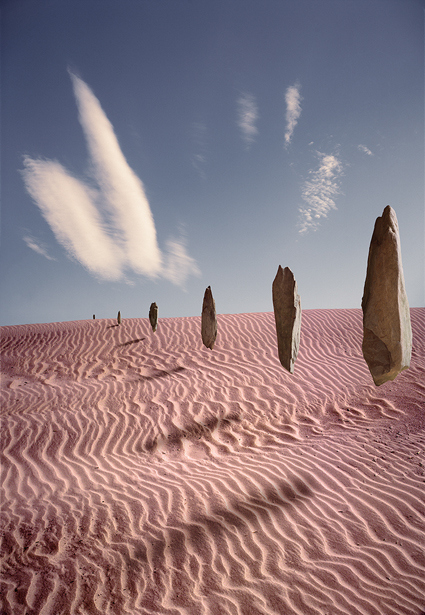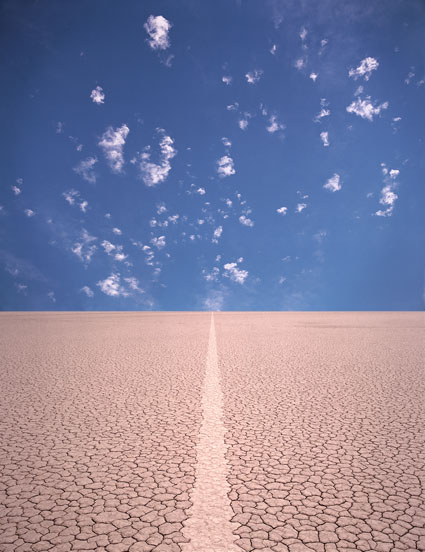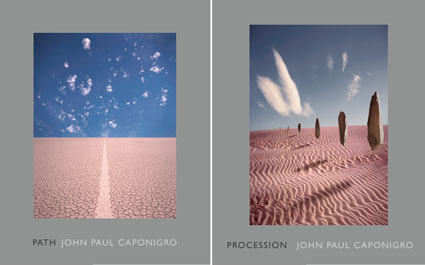Make A Plan- The Story Behind The Photograph
Procession II, Cushing, Maine, 1999
It took a clear set of plans to make this image – Procession II. First, I had to know what kinds of images I wanted to make, prioritizing some over others. Second, I had to figure out the elements needed for a general composition. Third, I had to identify the specific final composition I wanted to make. Fourth, I had to identify locations where I could find these subjects in, travel to them, and make exposures at the right time. Fifth, I needed to photograph one stone from multiple angles in a light comparable to the overall scene. Sixth, I needed to plan the location, shape, and quality of the shadows that needed rendering during compositing. It all came together after a lot of planning. Without a plan, it would have involved a lot more trial and error, requiring more time and resources, and even then, it’s quite likely that I may never have arrived here without a clear vision of where I wanted to go and why I wanted to do it.
There are other kinds of planning that are needed to succeed both professionally and personally. Whether you’re engaged in your creative life professionally or simply as a vehicle for personal growth (an important distinction to make), I recommend you make a creative plan. If you do this, you too will find both your productivity and fulfillment will increase in a way that’s meaningful to you.
Set a mission (why you’re doing it), goals (what outcomes you want), projects (the big things you do)(set goals for 1 year, 2 years, 3 years, 5 years, and end of life) and actions (the small steps you take to getting your projects done)(detail your 1 year next actions list) for your creative life.
Align your creative mission with your life’s mission. Most people need at least two missions: one for their life in general (which includes many things – health, family, finances, etc.) and one for a specific area, like their career or creative life, which may or may not be the same. Make sure that your missions share something in common – something other than yourself. The more you can align them, the more likely you are to achieve them, increase your productivity, and be more fulfilled.
A plan is a work in progress. The best plans are flexible and can be modified. If I don’t learn something new from a process, often something that shifts my perspective significantly enough to start doing something better than before, then I feel I haven’t truly excelled at what I’m doing. I expect to improve my plans. That doesn’t mean I shouldn’t waste time making plans. It does mean I can waste time making plans that are too detailed or too speculative. In addition to learning when and how to plan, it’s also important to learn when to stop planning. But do plan. Planning not to plan is planning to fail. If you don’t make plans, life just happens and you may not make the time for the things that matter most. Make that time.
Questions
How can planning help strengthen your creative efforts?
At what stages and in how many ways can you encourage the evolution of those plans?
When is it better to abandon an old plan for a new one?
What are the positive and negative effects of having no plan at all?





